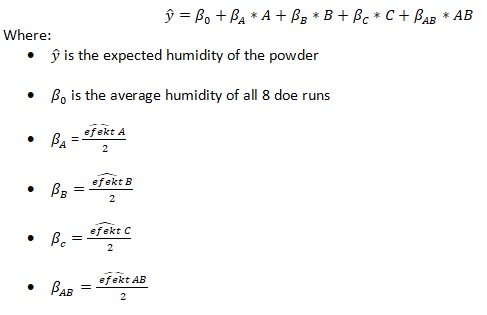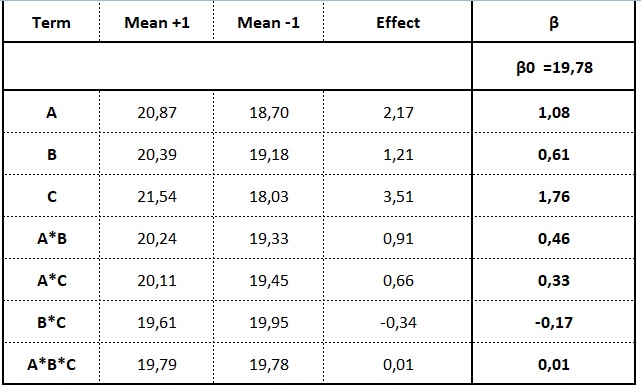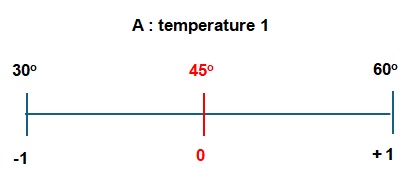Below you will find the earlier parts of this article:
Mathematical model describing the influence of tested factor settings on humidity
In our example, we consider the effects of factors A, B, and C, as well as the A*B interaction, to be important. From these effects, we will construct an equation that will show the humidity level achieved for different settings of these three factors.
Kliknij, aby powiększyć
The equation showing what the moisture of the powder at the outlet of the dryer will be, after taking into account significant factors, looks as follows:
To predict humidity, replace A, B, and C with the levels of these factors you want to predict. How does this work? Let’s calculate the humidity when:
A: Temperature 1 = 45°C
B: Temperature 2 = 37.5°C
C: Water Dose = 55%
We don’t enter actual values into the equation, but encode them in a range from -1 to 1, using the testing levels used in the DOE.
Factor A: Temperature 1, in the DOE, was tested at -1 = 30°C and +1 = 60°C. 45°C is halfway between -1 and +1, meaning it’s 0 on this scale.
Kliknij, aby powiększyć
Factor B: temperature 2, was tested at -1 = 30° and +1 = 60o. 37.5° is 1/4 of the distance between -1 and +1, so it is -0.5 on this scale.
Kliknij, aby powiększyć
Factor C: water dose, was tested at -1 = 40% and +1 = 60%, 55% is in 3/4 of the distance between -1 and +1, i.e. it is 0.5 on this scale.
Kliknij, aby powiększyć
Therefore:
For:
- A = 0
- B= -0,5
- C= 0,5
- A*B = 0 * – 0,5 = 0
The ending of this story is in part four which you will find below:










